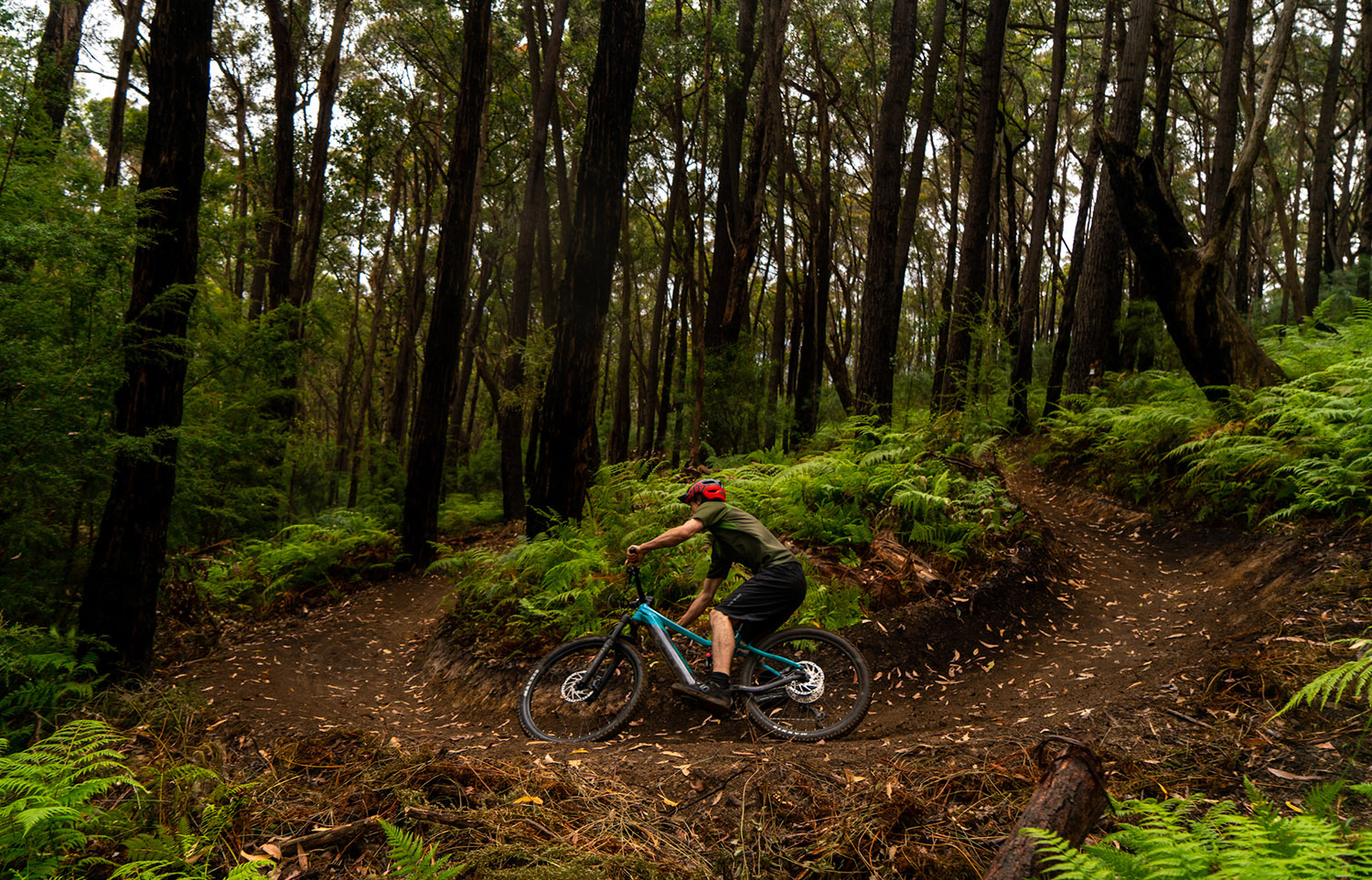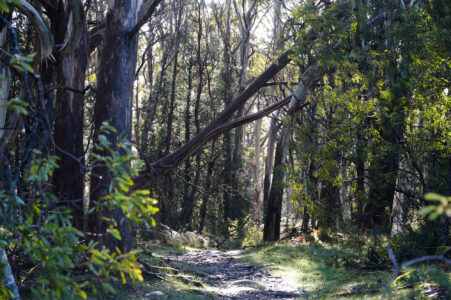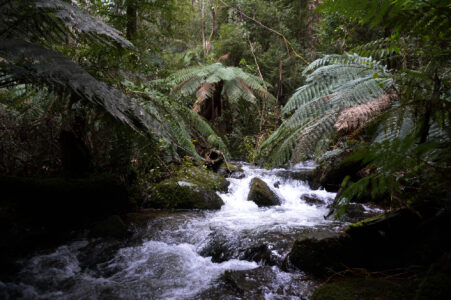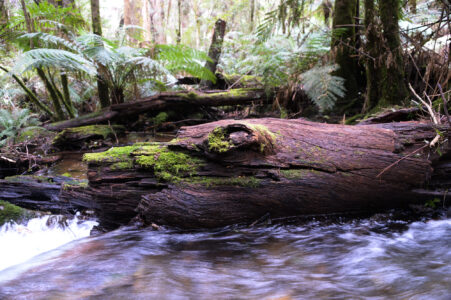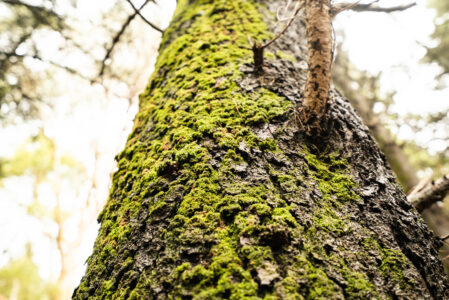Over the last 18-months, the Warburton Mountain Bike Destination has undertaken an Environmental Effect Statement. This process is usually reserved for projects like mines and highways, and Warby is the first mountain bike development subjected to this level of scrutiny.
After submitting the 3,500-page report in October, the EES has passed another milestone in the process, with public hearings in front of the Inquiry and Advisory Committee (IAC) wrapping up last month. This is the follow-up to the public exhibition period where the community and stakeholders had the opportunity to dissect the entire document and have their say.
“So it’s a bit like a planning panel decision. Community members were invited to have their say on the project, as were all stakeholders. During the community consultation period, I think we received 2,707 submissions on the project, which is extraordinary,” says Warburton Mountain Bike Destination Senior Project Manager with the Yarra Ranges Council Matt Harrington.
Of those submissions, 2,400 supported the project, which is unheard of in the realm of projects undergoing the EES process. Typically, only the objectors take the time to share their opinion with the planning board.
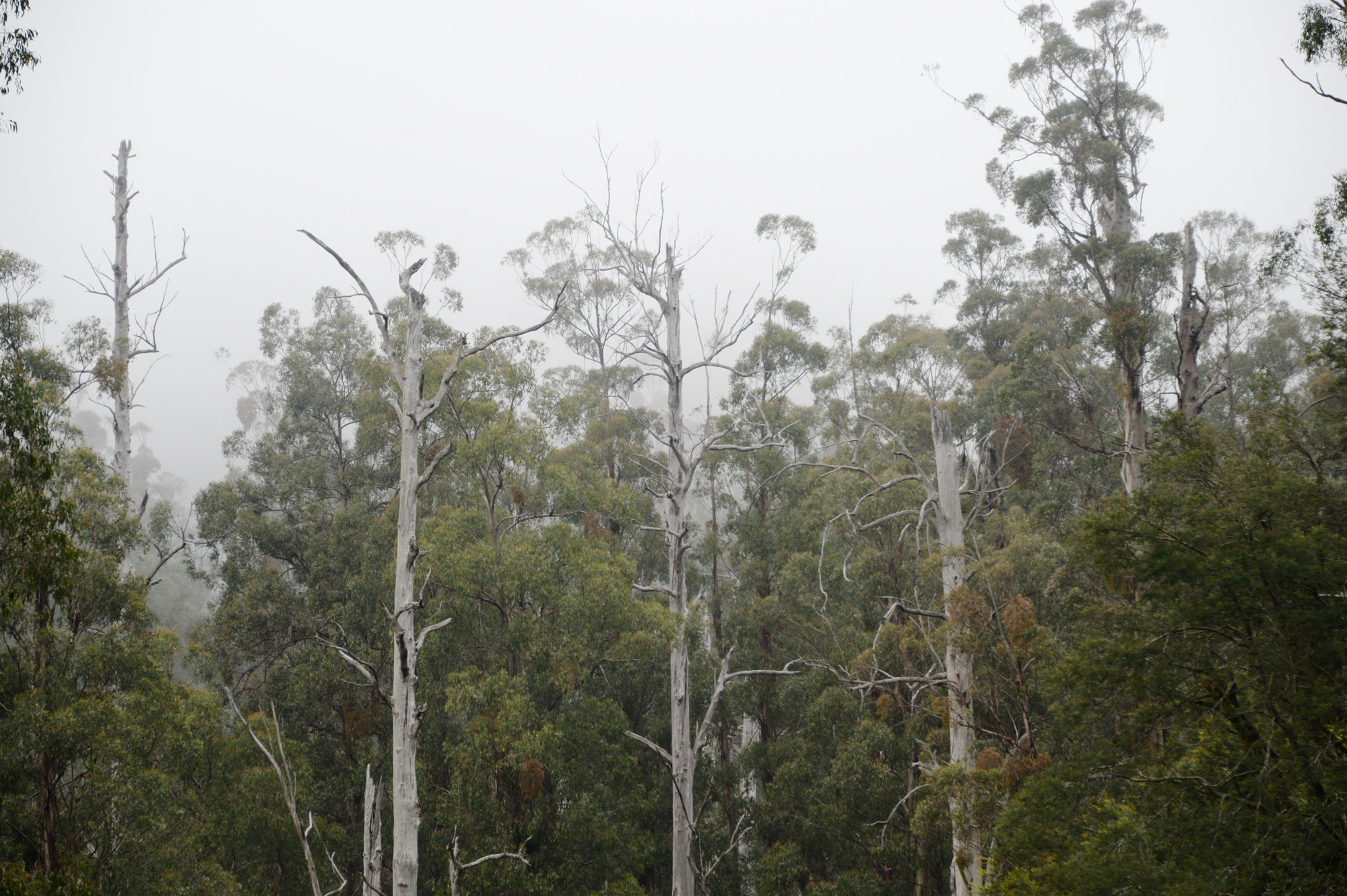
The IAC was appointed by Victorian Minister for Planning and was comprised of planning experts who presided over the hearings, lasting four weeks.
“That’s the opportunity for us to get in front of the IAC and put forward our case for the project and the general community to be heard. So any one of those 2,702 submitters can elect to be heard during the hearing,” explains Harrington.
There were about 70 people and groups that presented to the committee. That included everyone from the council, to agencies like Parks Victoria and Melbourne Water — who brought expert witnesses — and community members who had something to add to the conversation.
“You have lawyers and barristers involved, and it does become quite adversarial and legalistic by the end with the way it’s structured,” says Harrington.
While the majority of the hearings were formal and extremely information-dense there were some bombshells that dropped during the presentations and cross-examination.
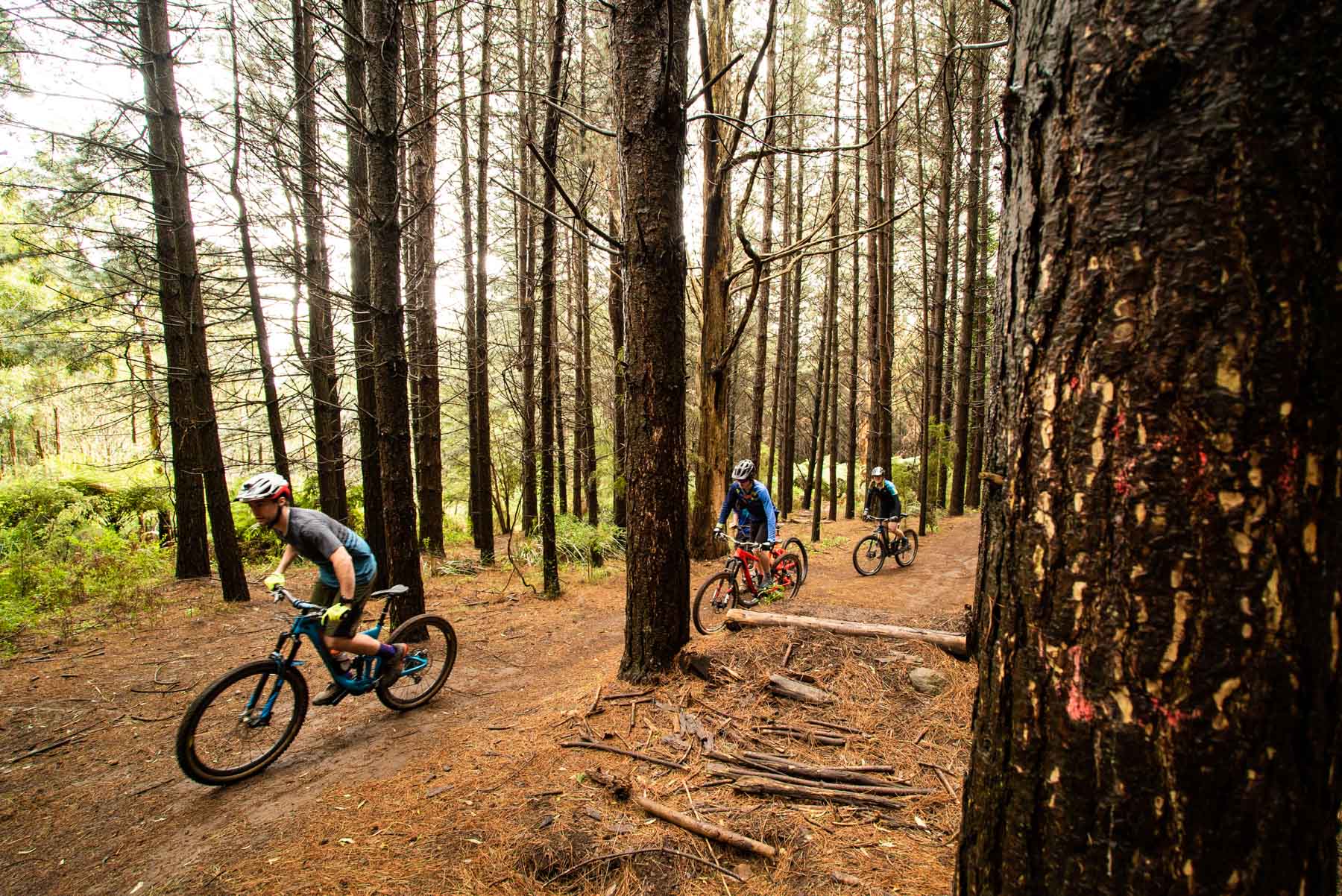
Related:
- The Curious Case of The Warburton Mountain Bike Project
- What did we learn from the Warburton Mountain Bike Destination EES?
- Warburton mountain bikers remove over 5-tonnes of rubbish from the bush.
How did it go?
The Warburton Mountain Bike Destination is breaking ground in that it’s the first project of its kind to undergo this process, and according to Harrington, this was undoubtedly a learning curve.
Flow tuned into a number of the hearing days. From our perspective, one of the biggest hurdles that Harrington, his team, and the expert witnesses had to contend with was the fact that they weren’t presenting to folks that had much if any, familiarity with mountain biking.
“One of the things that became evident early on was that we’re dealing with a lot of information here, and many of the parties reading this information have never engaged with mountain biking before,” says Harrington.
“One of the major challenges was how you convey all of this information so that people can digest and get their heads around,” he says.
It wasn’t just the council and the big agencies that came with detailed presentations. Local community members had done their homework and came prepared with in-depth presentations.
“Some local community members looked into traffic and had done a fair bit of analysis into Department of Transportation data. So we were able to take that and then go and do some further work exploring traffic counts and numbers and look at the best information available,” says Harrington.
In addition to the 3,500 pages of reports in the EES submission, the Yarra Ranges Council produced an additional 1,500 pages of reports during the hearing.
“We would hear some new evidence or a new point of view presented, and we were able to do additional background work to respond. Those reports covered everything from, traffic analysis, to looking at weeds and pathogen spread, and evidence presented by other experts around things like potential impact on cool temperate rainforest,” says Harrington.
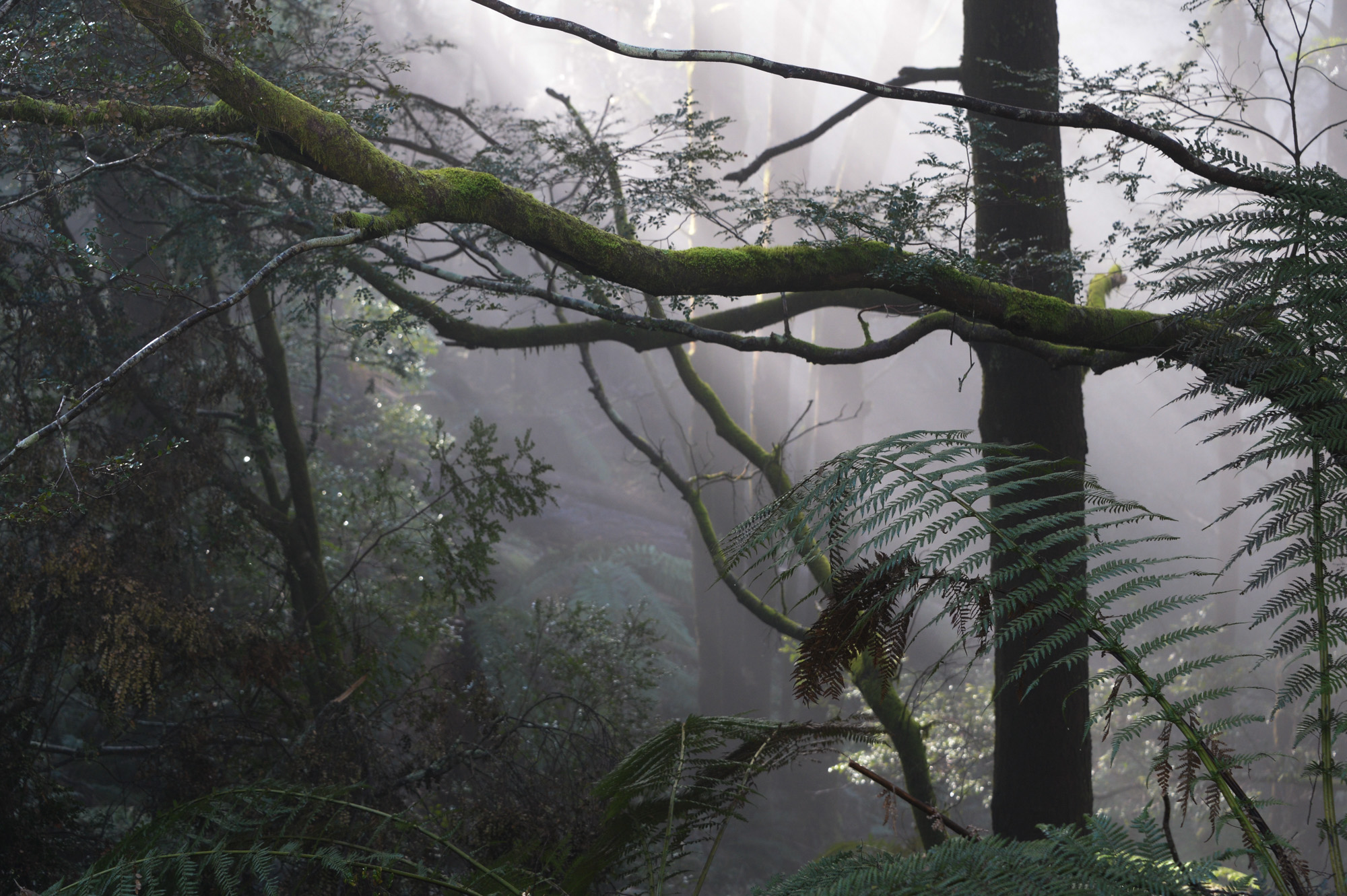
Proceedings worthy of an episode of Law and Order
In four weeks of information-dense hearings about proposed mountain bike trails, it’s hard to imagine any Law and Order style fireworks would come to light, but man, did the Warburton Mountain Bike Destination deliver on some prime time worthy viewing — cue the theme song.
Unfortunately, the IAC decided against recording these hearings, so we can’t offer a full play-by-play. With the EES process still ongoing, and with the Minister for Planning still to announce his decision, Harrington couldn’t comment on specifics from the hearings.
However, all documents and submissions are publicly available on the Engage Vic website. So we’ve done some sleuthing to bring to light the wildest bits of these proceedings.
While we’ve focused on some of the more outlandish and absurd things that happened, it’s crucial to note that the vast majority of submissions were positive, and many of those who presented spoke about how much the trail network will bring to the town.
Parks Victoria
Parks Victoria has been involved with the Warburton EES more or less from the beginning and sits on the Technical Reference Group and Project Reference Group. PV also participated in the ground-truthing of the proposed alignments and contributed to determining alternate alignments.
However, PV also made submissions alleging they could not support the trails proposed inside the national park due to their ‘cumulative impact,’ but did not specify what these impacts were, nor did they provide any data to back up this claim. The Yarra Ranges Council pressed PV on the issue, where the presenters agreed the trails in the National Park would not impact cool temperate rainforest, cool temperate mixed forest, wingless stonefly, leadbeater possum or its habitat.
In its Part C submission, the Yarra Ranges Council also noted that two of the proposed trails Parks is unhappy with run parallel to an existing walking trail that receives no maintenance, and exhibits high levels of erosion and sedimentation. Another follows a decommissioned walking trail, and the final trail traverses land that is already disturbed and home to non-native species like pine trees. All of that is to say, these alignments aren’t trampling through pristine, untouched native bush.
Another issue that Parks raised with the potential trail network focused on sedimentation, but it chose not to ask any questions during an expert witness’s cross-examination. The presenters from Parks would later concede they had not taken an in-depth look at the Council’s Operational Environmental Management Plan, which addresses sedimentation and runoff. But that’s not all.
On slide 19 of Park’s Powerpoint presentation, it shared the picture below. It told the committee that it was an image of Blue Derby and an example of professionally built mountain bike trails — namely those constructed by World Trail.

The trouble is, this is not a photo of Derby, nor a trail constructed by World Trail, and the Yarra Ranges Council rightly called bullshit. When pressed on the issue, Parks admitted that it was an image they had found on Google, and they were not able to articulate the source of the photo or where it was taken.
A reverse image search shows this same photo appears on a travel website promoting cycling on St Lucia, an island in the Caribbean, and also in a newspaper story promoting mountain biking in the Pacific Northwest. There is no metadata attached to either of these images, so we can’t be sure either of these is the original source — what we can be sure of is that it ain’t Blue Derby.
There is another layer to the appearance of a misleading image like this appearing in a Parks Victoria presentation. Remember the controversy with rock climbing in Grampians National Park?
In that case, misleading images were presented to the Minister for Environment showing damage to Aboriginal Heritage sites purported to be caused by rock climbers. Parks also stated an area covering 7.425ha had been damaged when, it was 0.07ha.
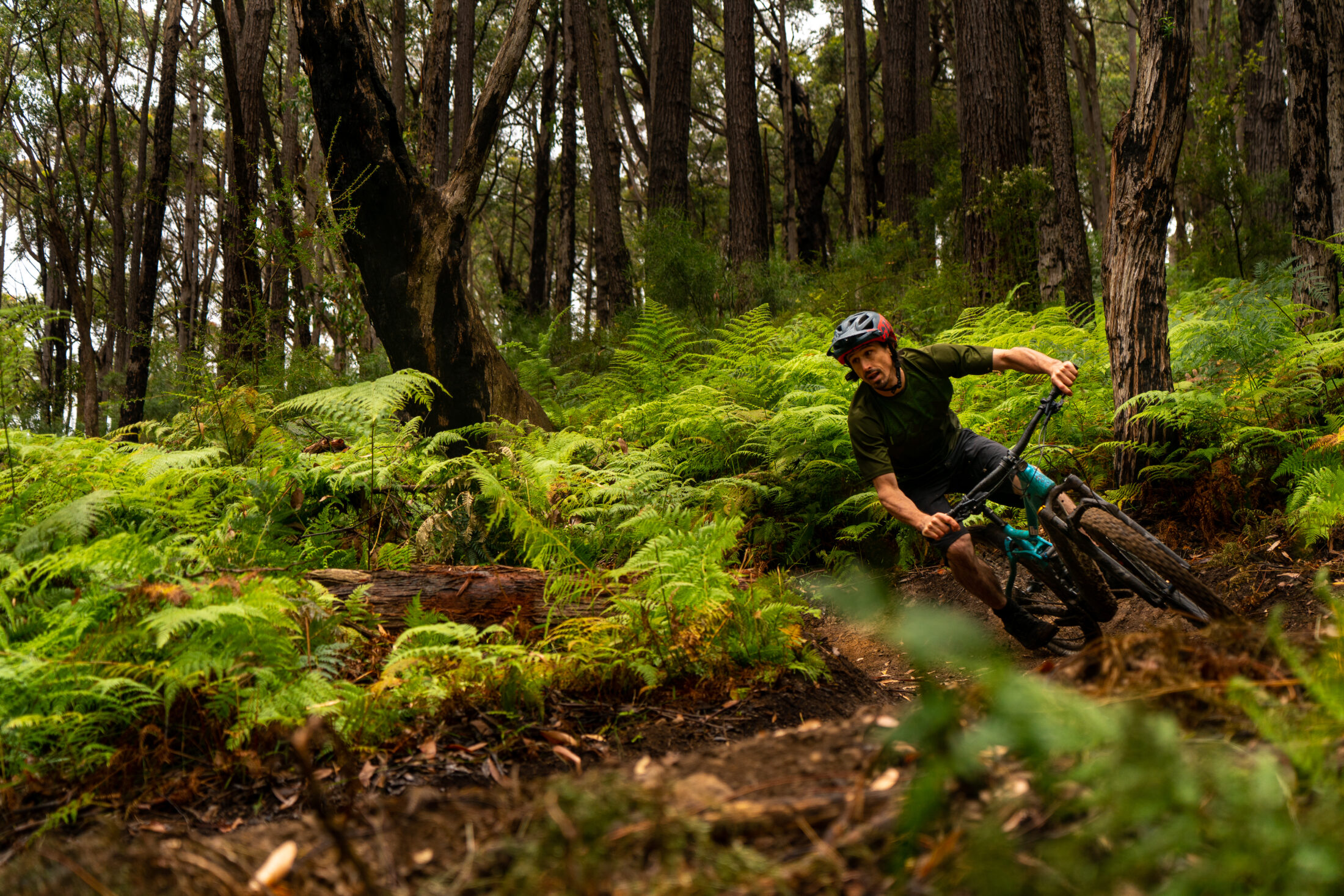
As it happens, one of the individuals involved in that indiscretion is also involved with this misleading representation to a ministerial committee.
But that’s not the end of it. Parks Victoria also called into question the level of confidence that can be put into micro-siting — where trail builders and technical experts walk the 20m trail corridor and move the alignment to avoid anything remotely sensitive. However, as the Yarra Ranges Council noted when it came to the Grampians Peak Trail, where Parks Victoria was the backer, it utilised mico-siting.
The Victorian National Parks Association
The Victorian National Parks Association is an independent not for profit that advocates for conservation, and has been pivotal in establishing more than three-dozen National Parks around the state. They also advocate against inappropriate developments inside parks and have deemed the Warburton Mountain Bike Destination worthy of their crosshairs.
The VNPA came prepared with lawyers, barristers and expert witnesses, who made the case that the proposed mountain bike trails have no business inside Yarra Ranges National Park. Despite all of this firepower, it seems they forgot to vet their expert witnesses, and it came to light that two of the three are current dues-paying VNPA members — one has held a membership for 50-years! None of the three felt it necessary to disclose this apparent conflict of interest and only said something when asked during the hearing.
The submission from Dr Mary Cole, the VNPA’s expert on plant pathology, kicked off with a disclaimer stating she accepted no responsibility for “error, omission, effect or misstatement…or for any other lessor consequences which may arise from any person relying on anything in this report.”
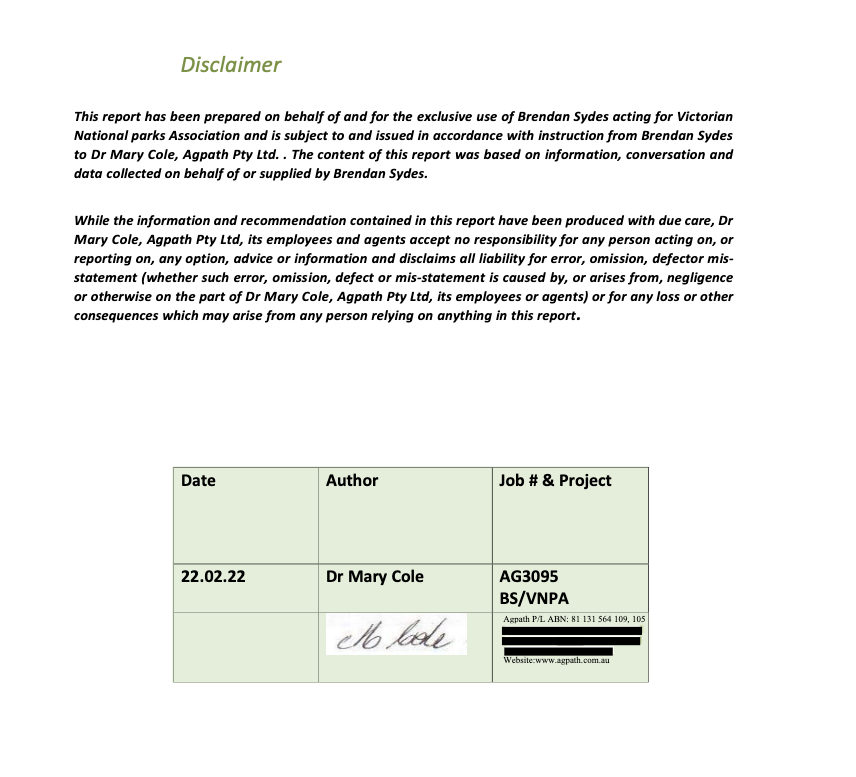
During the hearings, it also came to light that Dr Charles Meredith, who has had the 50-year membership with the VNPA, and was called to give expert testimony on environmental and ecological impact assessment and management has not worked in that field for 12-years.
While this is a shaky foundation, the floor continued to collapse at every turn. None of the three witnesses conducted a site visit to determine ecological values and sensitivity, or whether or not things like Merytle Wilt or Phytophthora even existed in Yarra Ranges NP; all three expert witnesses acknowledged before the committee that they did not have any expertise or experience with mountain bike trail construction.
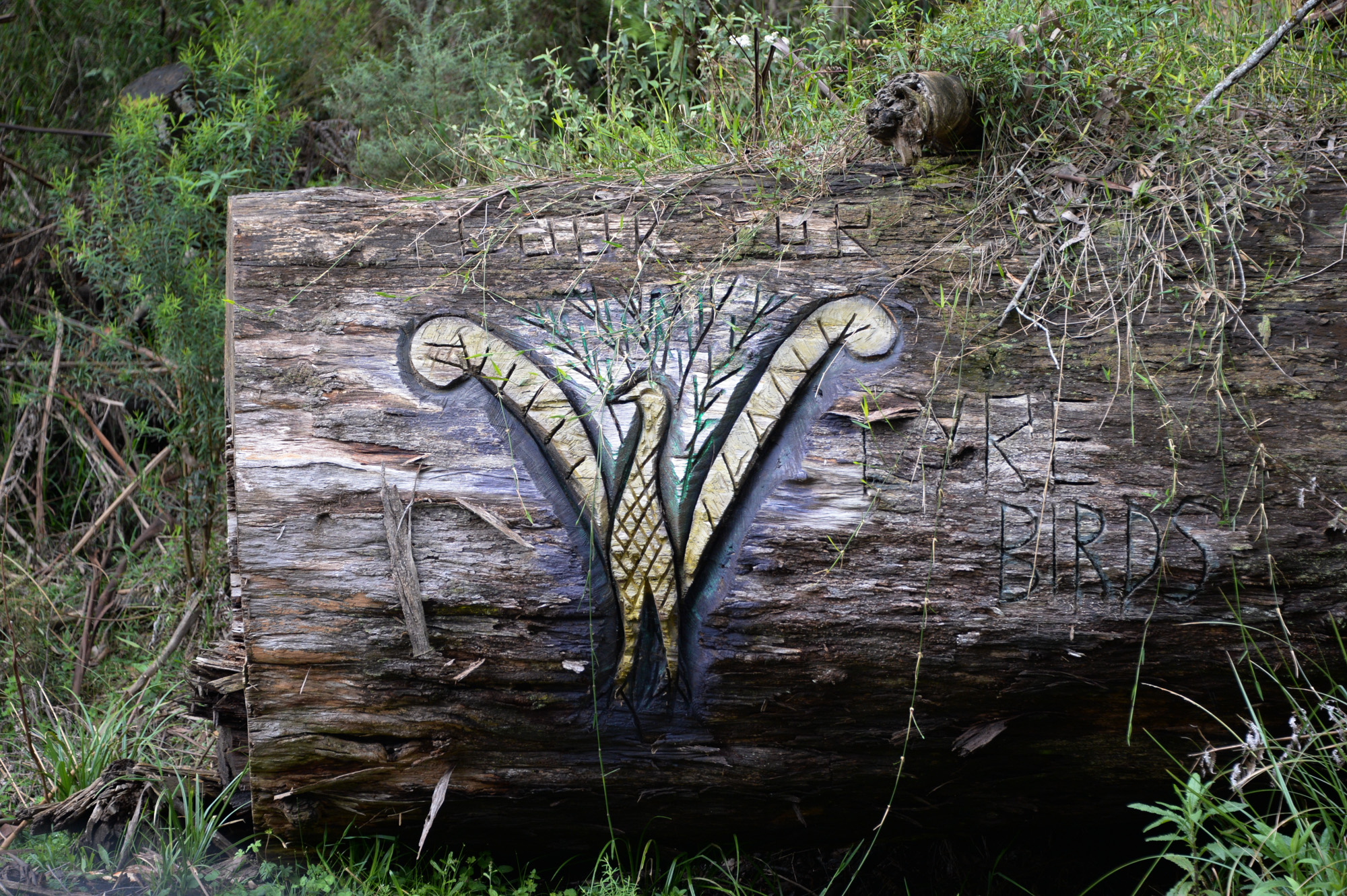
Each also demonstrated a general lack of familiarity with the project and reports contained within the EES. Dr Cole claimed that she would be unable to determine if “vegetation that is being removed or (sic) beech or eucalypt trees.” The Arborist Report in the EES states that trees are not proposed to be removed as part of this project.
Dr David Cheal, the VNPA’s witness Ecology (Botany), admitted in cross-examination that he’d not even taken the time to read the Arborist Report.
But it wasn’t just information buried deep in layers of technical reports. For example, Dr Cole would claim there would be 186km of new trails, when in fact, the max trail length for the project is 177km and is a mix of new and upgraded trails.
The wingless stonefly expert
The saga surrounding the wingless stonefly expert is a bit of a head-scratcher. Eddie Tsyrlin is the leading expert on the wingless stonefly, which calls a small area near the summit of Mount Donna Buang home. And because he knows more about this little critter than anyone on the planet, the Yarra Ranges Council engaged him as far back as 2019 to assess if the trails inside the national park would impact the wingless stonefly and how to manage those impacts.
The council took the advice contained in these reports, and implemented everything into the risk mitigation and management plans.
Tsyrlin also made a submission to IAC, which noted he was still worried about traffic on the access road being opened between July and September for trail maintenance as that’s prime hatching season. So council updated its management plan to close the trails starting from the Mount Donna Buang trailhead between July and September. The plan also closed the access road and prevented trail maintenance during this period.
During the hearing, Tsyrlin presented new evidence not contained in the 2019 or 2021 reports nor his submission to the IAC, outlining that his thinking on the project in the context of the management of national parks had changed in recent months — we’d note that this is outside his area of expertise. The evidence he presented also was in direct opposition to the 2019 and 2021 reports he prepared for the council.
The weirdest part about this whole situation came after Tsyrlin presented his evidence. The Yarra Ranges Council reached out, to find out what else should be considered and to further explore how to manage risk for the wingless stonefly, but he declined, based on legal advice.
This is what the beast looks like pic.twitter.com/N1jZsZO9v4
— Edward Tsyrlin (@Eddie_Tsyrlin) December 1, 2021
According to the Yarra Ranges Part C submission, when they asked who was providing this advice, Tsyrlin said, “A lawyer but I don’t want to disclose the name or affiliation.”
This is quite unusual, to say the least, and we’re left to speculate the source of this purported legal advice.
What’s clear through all of this is that Tsyrlin cares deeply about the wingless stonefly and the survival of the species, and he’s found himself in a challenging situation. But for that matter, the Yarra Ranges Council has demonstrated its willingness to take every appropriate action to protect the habitat of this little critter.
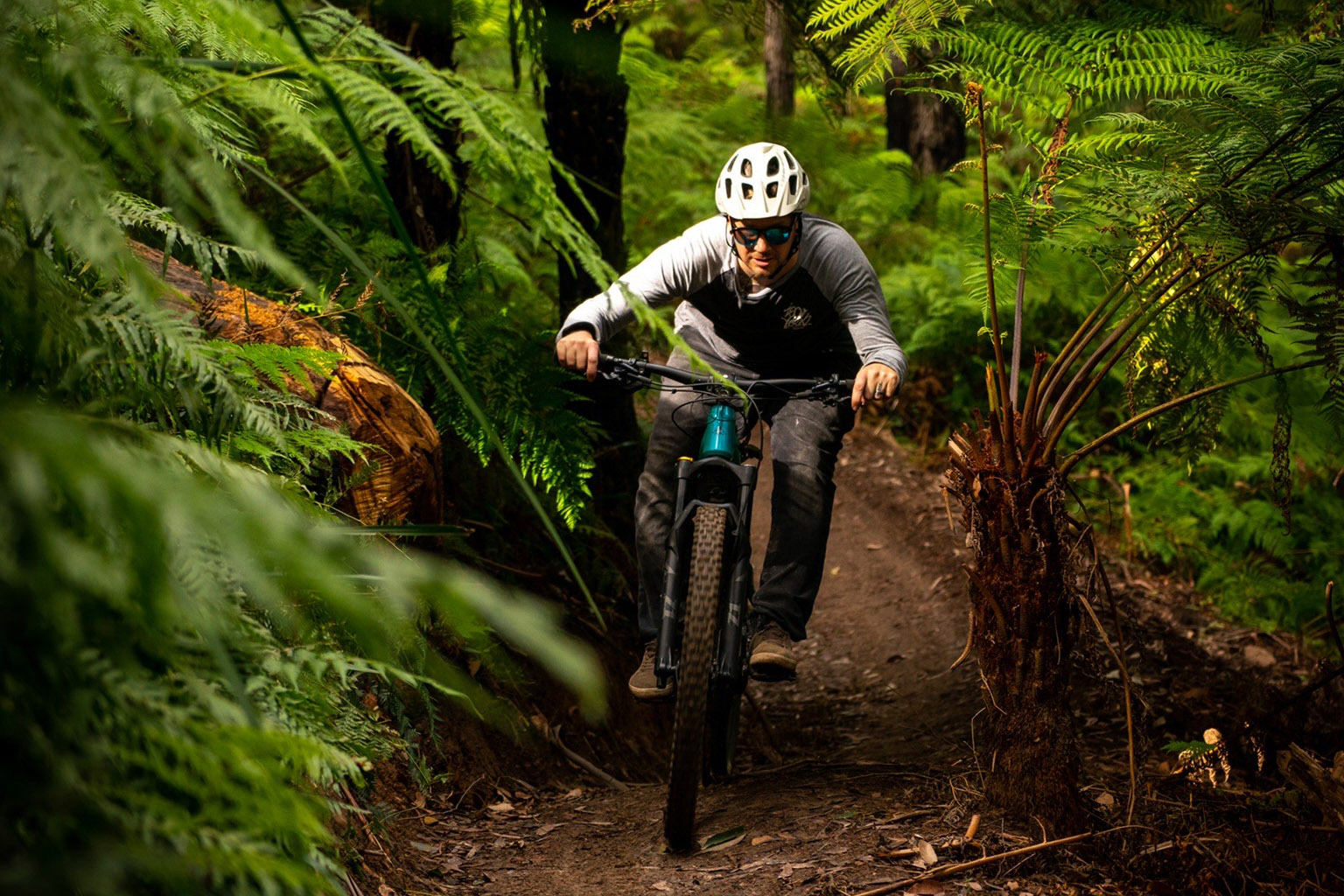
What happens now?
Now that the hearings have concluded, the IAC has 40-days (from the end of the hearing) to produce a report for the Victorian Minister for Planning, Richard Wynn.
Minister Wynn then has 25 days to review the report and come to a decision, meaning we should know what’s happening with Warby by July 8, 2022.
There are several possible outcomes, but they largely break down into a yes, the project can go ahead; no, the project cannot proceed; part of the project can go ahead, or we still need more information in these areas.
As to what that recommendation will be, your guess is as good as ours.
Being forever the optimists, the team behind the Warby Mountain Bike Destination aren’t sitting around twiddling their thumbs. They are already working to obtain the secondary approvals and starting on the detailed design process for stage one which is about 113km of trail through the state forest. Should any new information come to like, we’ll keep you updated.
